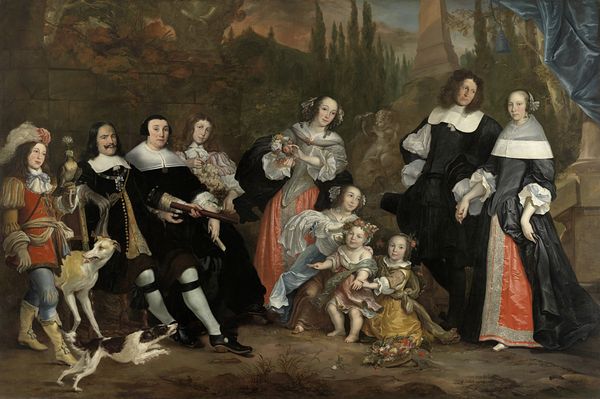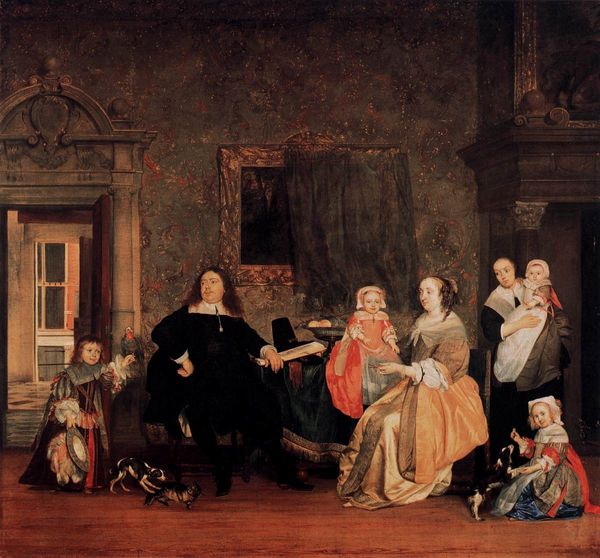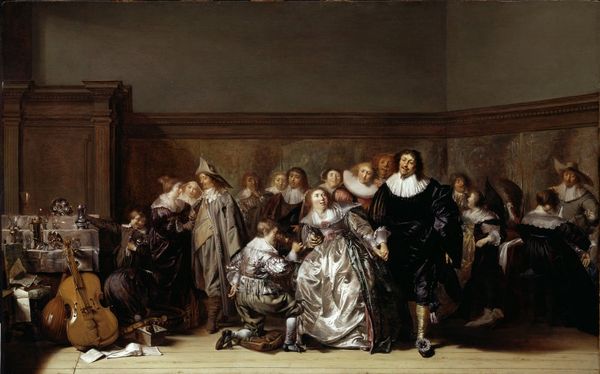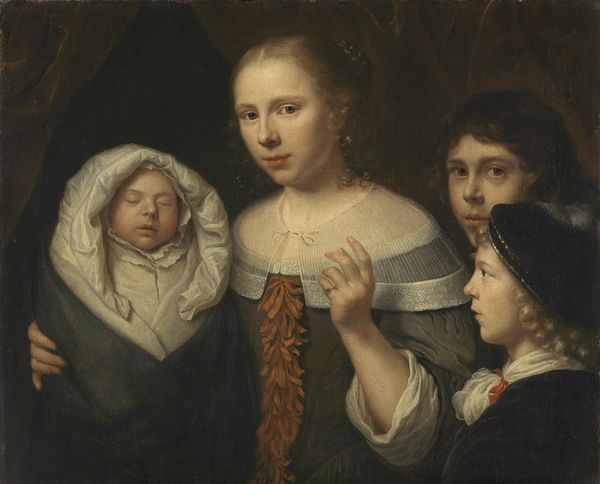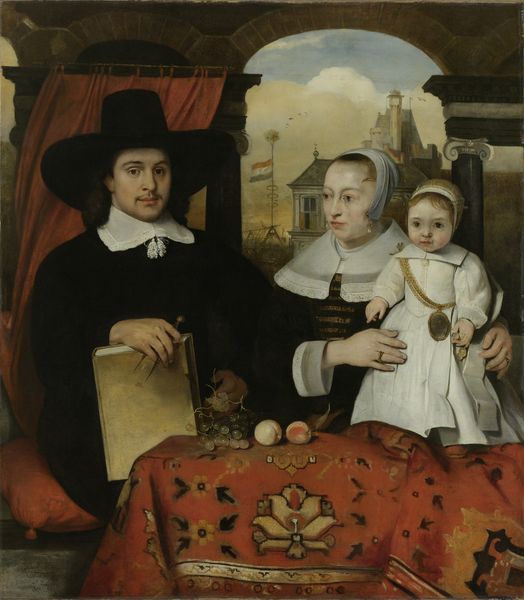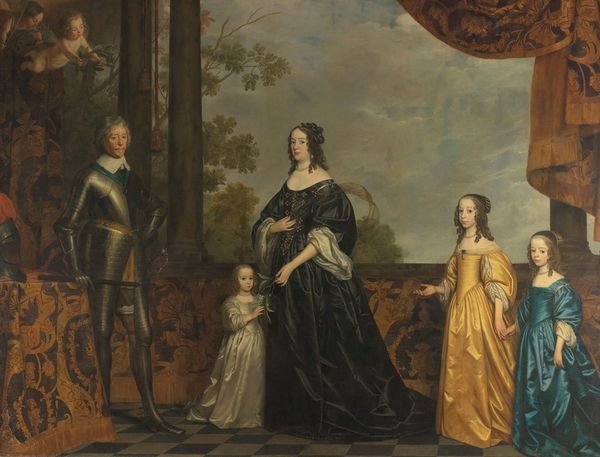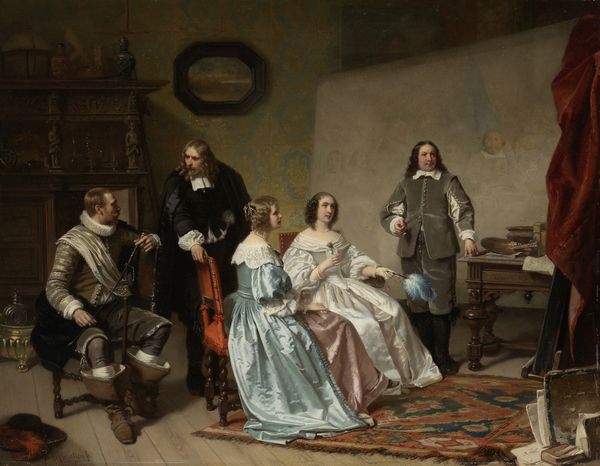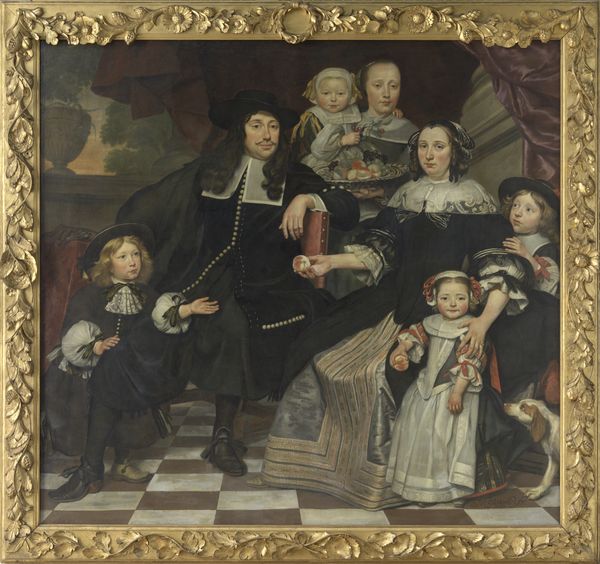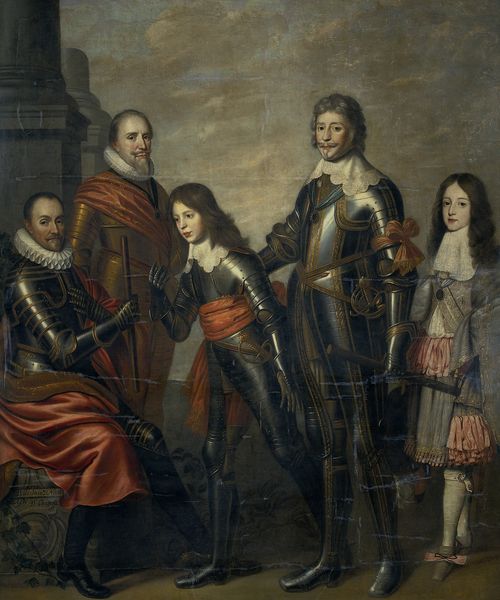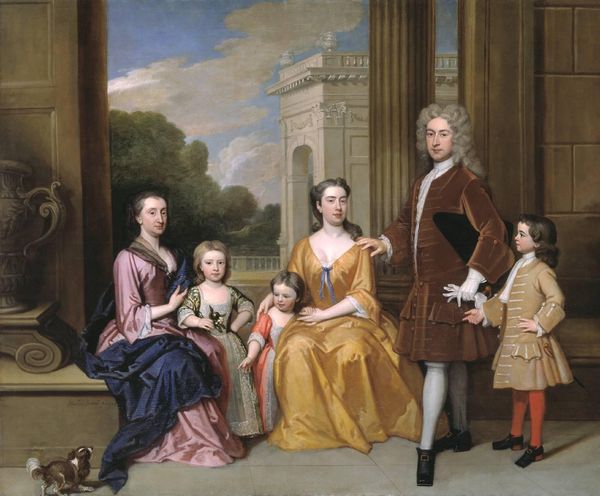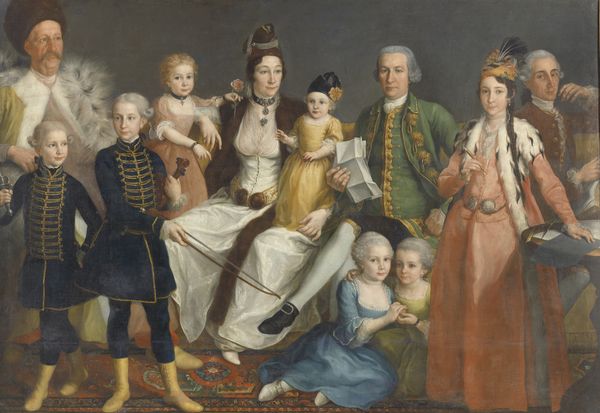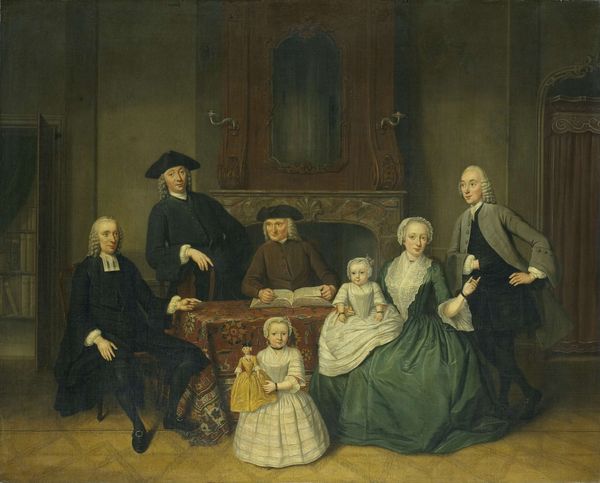
Reyer Reyersz van der Burch (1630-1695), Ammunition Officer attached to the Arsenal of the States-General, Delft, with his Wife Geertruid Graswinckel and their Children Frank, Cornelis, Reyer, Maria and Alida 1670 - 1680
0:00
0:00
cornelisdeman
Rijksmuseum
painting, oil-paint
#
portrait
#
narrative-art
#
baroque
#
painting
#
oil-paint
#
group-portraits
#
genre-painting
Dimensions: height 207 cm, width 306 cm, thickness 4 cm, height 216 cm, width 313 cm, depth 10 cm
Copyright: Rijks Museum: Open Domain
Editor: So, this painting is by Cornelis de Man. It's called "Reyer Reyersz van der Burch (1630-1695), Ammunition Officer attached to the Arsenal of the States-General, Delft, with his Wife Geertruid Graswinckel and their Children Frank, Cornelis, Reyer, Maria and Alida." It’s oil on canvas, painted sometime between 1670 and 1680. There’s something about the formal, almost staged, feeling of it that I find a bit distancing. What stands out to you? Curator: The formality is striking, isn’t it? Consider how this image reinforces the power structures of 17th-century Dutch society. Reyer, as an ammunition officer, occupies the most prominent position, embodying patriarchal authority. His wife and children are positioned to reflect his status, almost as extensions of his identity. Do you see how the painting naturalizes this social hierarchy? Editor: I see what you mean. It's not just a portrait; it’s a statement. But what about the little girl offering the flowers? Is there some other layer there? Curator: Exactly. The gesture could represent innocence and beauty, attributes often assigned to women, subtly reinforcing gender roles. Notice the backdrop: a building related to Reyer's work. De Man connects family identity and professional identity. This isn’t merely representation, but an assertion of social standing. Where does individual agency enter into all this? Is this family happy? How do we really *know* these individuals? Editor: So, the painting is as much about social commentary as it is about the family? Curator: Precisely. By understanding the historical context and social norms, we can deconstruct the image and see beyond the surface. The family portrait becomes a powerful lens through which we can examine class, gender, and power in the Dutch Golden Age. Editor: That really changes how I see it. It’s much more than just a picture of a family. I am left wondering about the children. Thank you. Curator: Absolutely. Examining art through a critical lens encourages us to ask questions and see the deeper meanings embedded within the image. We're unearthing a world, not just observing a pretty picture.
Comments
No comments
Be the first to comment and join the conversation on the ultimate creative platform.
